I had a super Easter breakfast with all the family. Shortly thereafter, we received a Fire Department call for ice rescue/plane crash (I'm a volunteer FF). So I jumped in the mighty search and rescue Cessna 150, and off I went to find the scene, and direct the rescuers on the ice if needed....
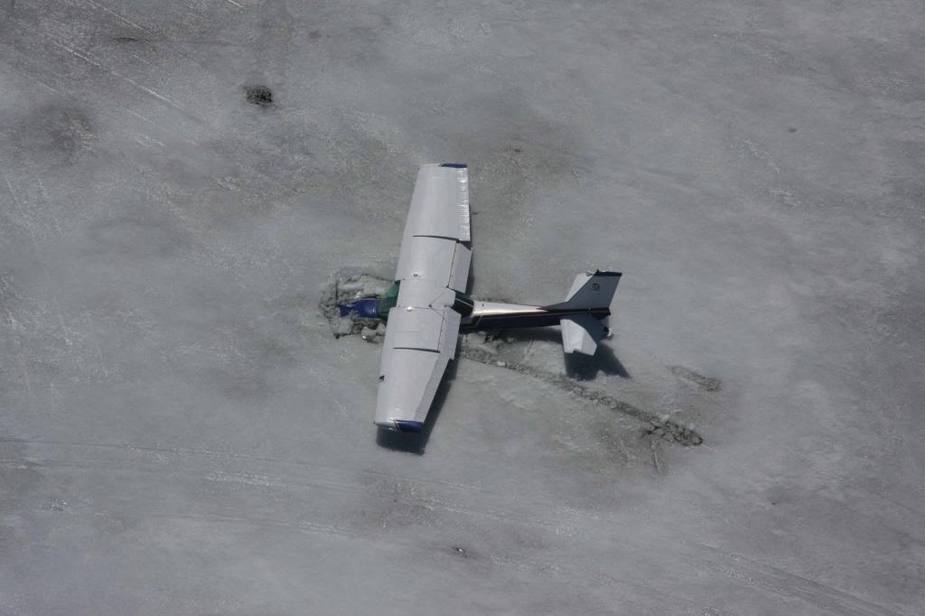
As the pilot was only wet, and safely ashore, the fire department was stood down. I landed back at home, then drove up to help a fellow flyer. With my yellow rescue suit on, I went out to the plane to hook up for the chopper they'd called...
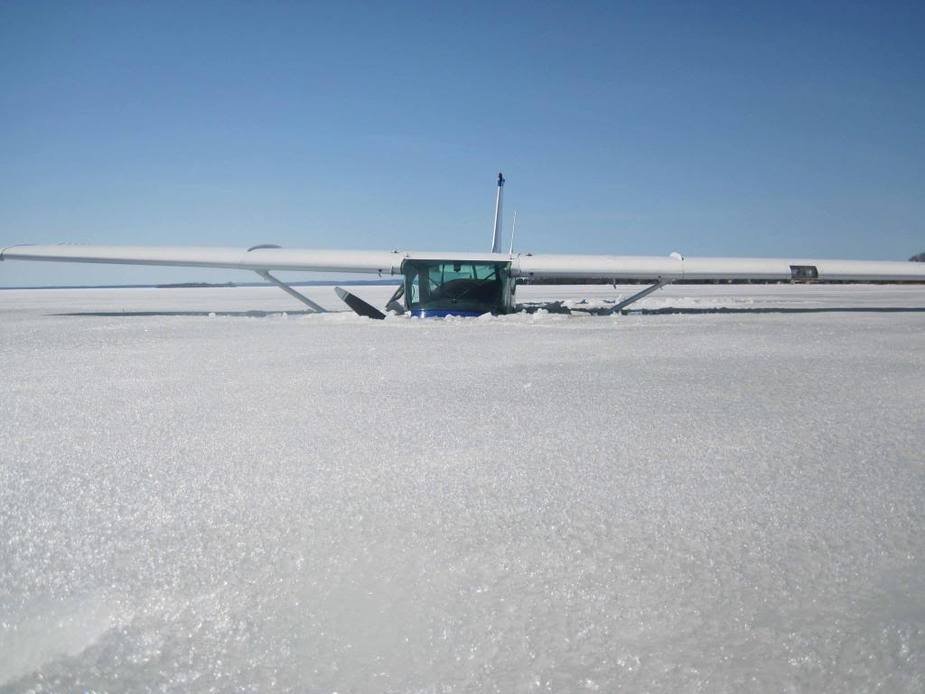
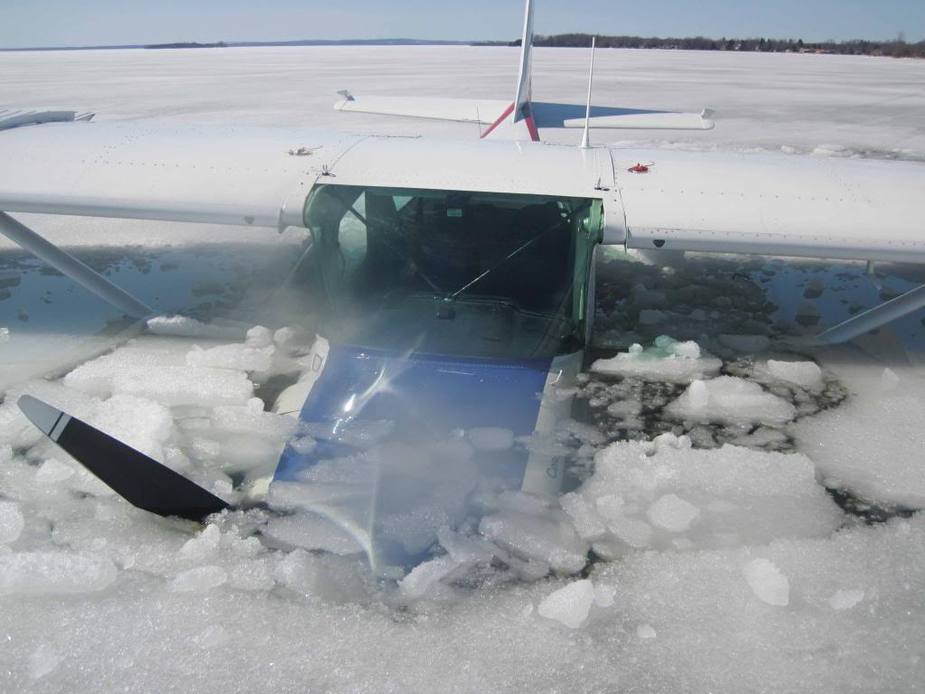
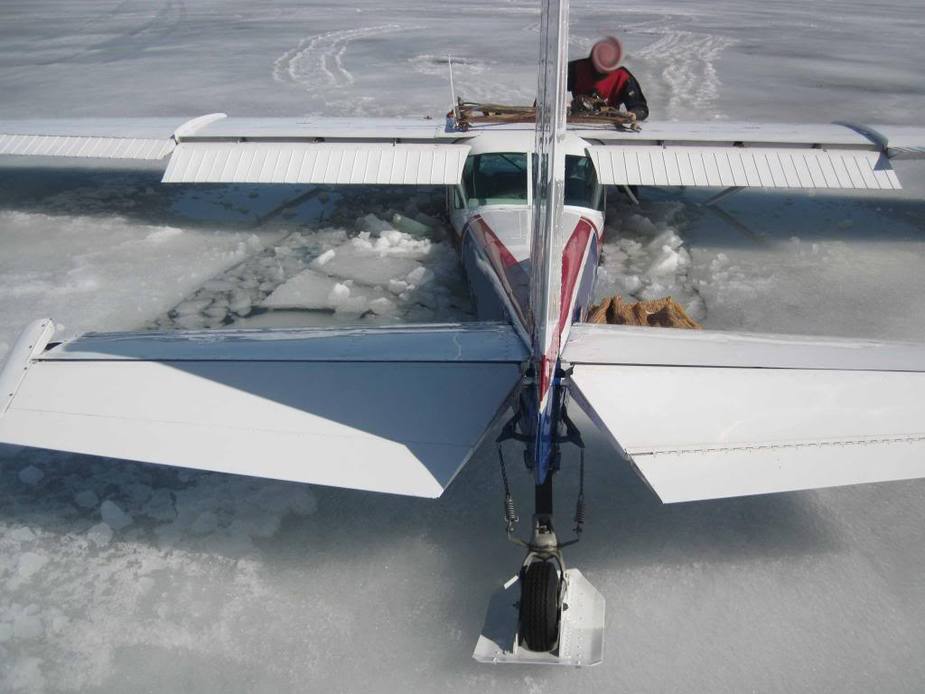
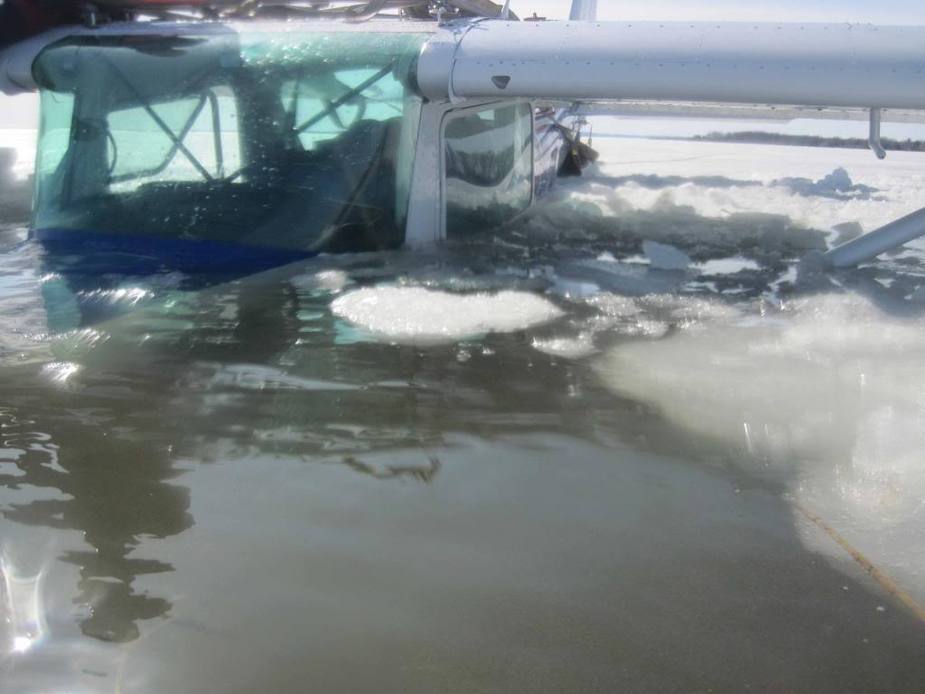
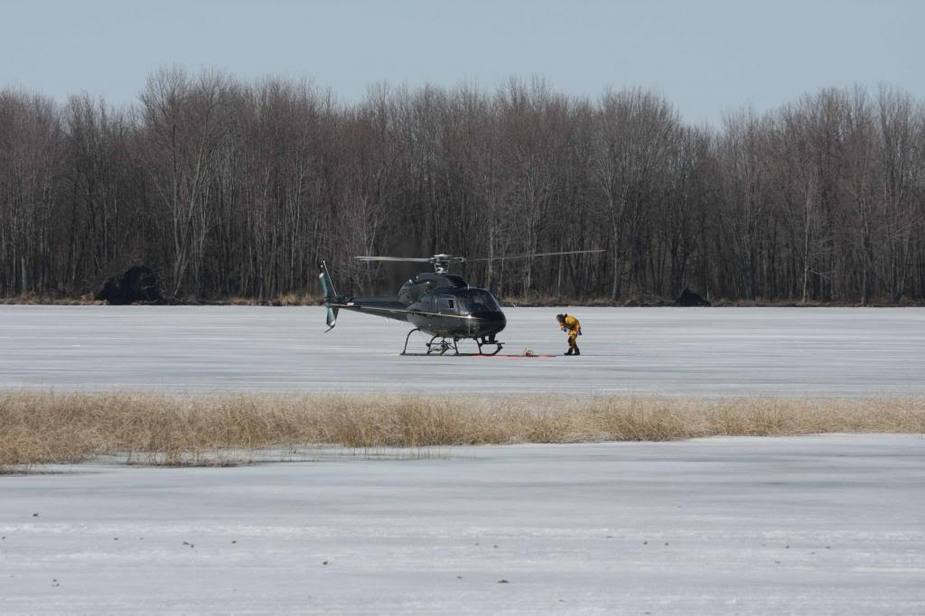
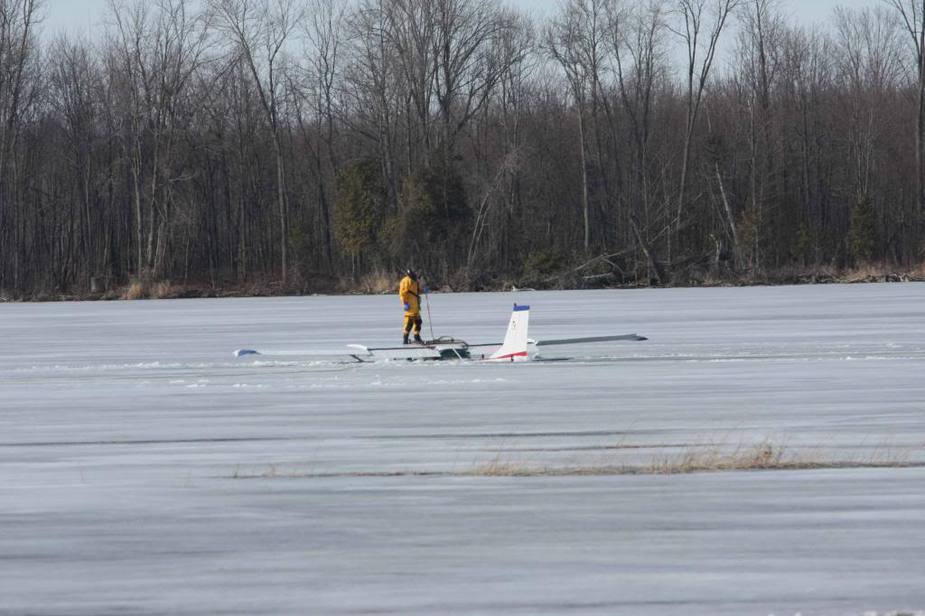
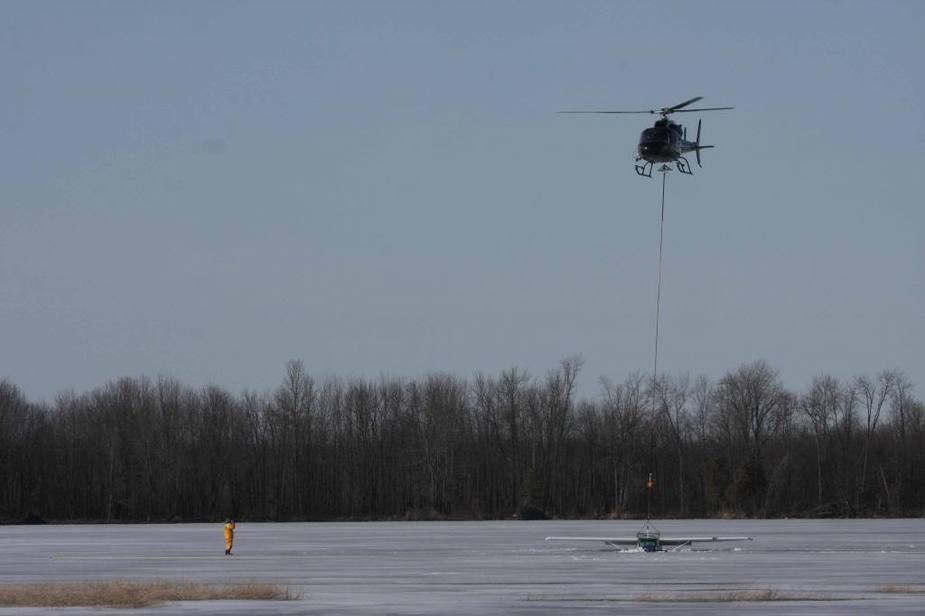
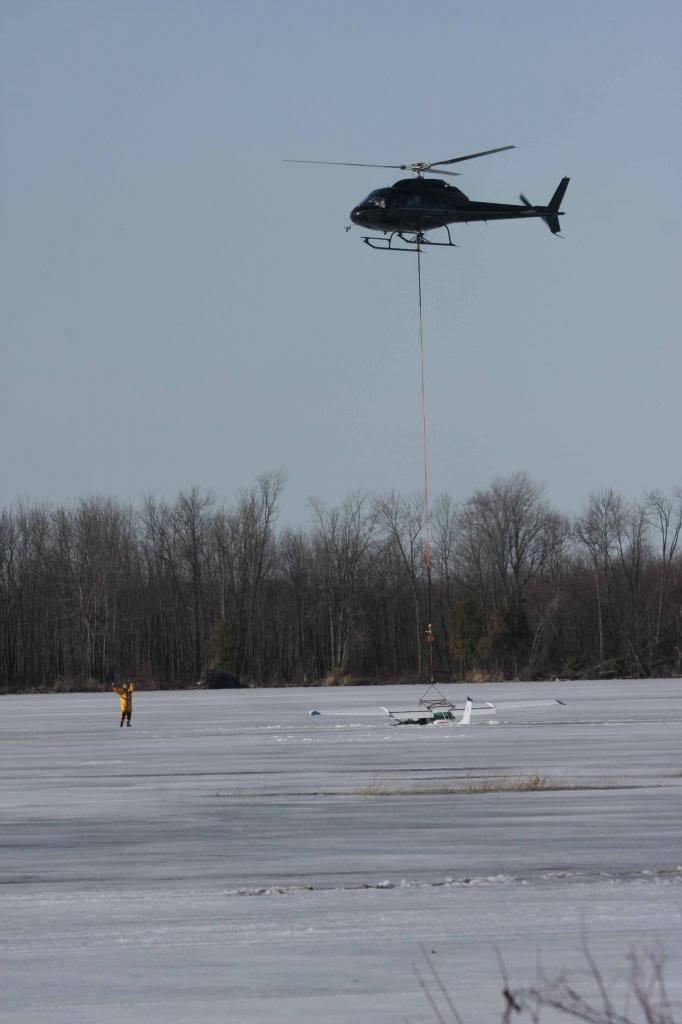

Despite a valiant effort, there was too much water in the plane for the lift, so it will be removed by more conventional means tomorrow.
In defense of the pilot, he was assured of the conditions, by the pilot of a ski equipped Citabria who landed in the same place just minute earlier. During the three hours I worked on the ice supporting the recovery effort, ice conditions changed considerably, such that I was unable to return on my walking path out, without falling through many times. I am able to walk (very gently) on 1.5" of strong clear ice. Where I broke through with the plane, 1" of useless slush was on top of 2" of yucch ice. Behind the plane, the ice would support me, though I expect it was only and inch or two thicker - hard to tell. I'm not making a statement here as to what "safe ice" is for any purpose, that's up to each user to determine, but only a few inches is not it! The type of ice makes a huge difference in its capacity per thickness.
I have probably come closer than I realize to landing on [too] thin ice. Maybe good judgement, but much more likely luck on my part. I'm reminded that caution is better on the ice at any time, but particularly this time of year!
So, with the owner's permission, the foregoing photos, that we may all be reminded....
Thanks for posting these - very interesting. Very unfortunate. Good that the pilot go out safely.
the mighty search and rescue Cessna 150
Not heard that expression before ;)
Can I ask what you mean by "more conventional means" to recover the aircraft? You can't drive anything out to it, and how do you get a boat there with sufficient size to lift the aircraft out?
I guess there is a good chance it might have sunk by the next day, so would need to be quick to salvage anything. Presumably the electrics will be shot and the engine need a full refurb. Pretty much a writeoff?
Very convenient that it's a seaplane Cessna which has the modification with hooks on top of the fuselage. Maybe a bigger helicopter would have done the job?
Wow! Incredible photos. Thanks for sharing. I don't expect I'll get the opportunity to land on ice but interesting nonetheless. The pilot must have been cold after being in that water.
Very interesting.
I have a photo above my desk - origin unknown - of a Cessna which is completely sunk through ice and just the wings are lying on top of the ice. The ice is cleanly broken so it doesn't look like the occupants would have got out easily...
Pilot DAR, that's an exceptional set of photos & report... - quite a way to spend Easter holidays! 
Yeah, a bigger helicopter would have made all the difference. There are none bigger based anywhere in the area.
The plane was sitting on the bottom on its skis, so further sinking was happily not a risk. I did mean that we had to float it to move it in the channel we chainsawed in the ice.
So we got it out the old fashioned way this morning. Happily nearly no damage caused during recovery! The wings are being removed, and it will be back at the airport drying out shortly...
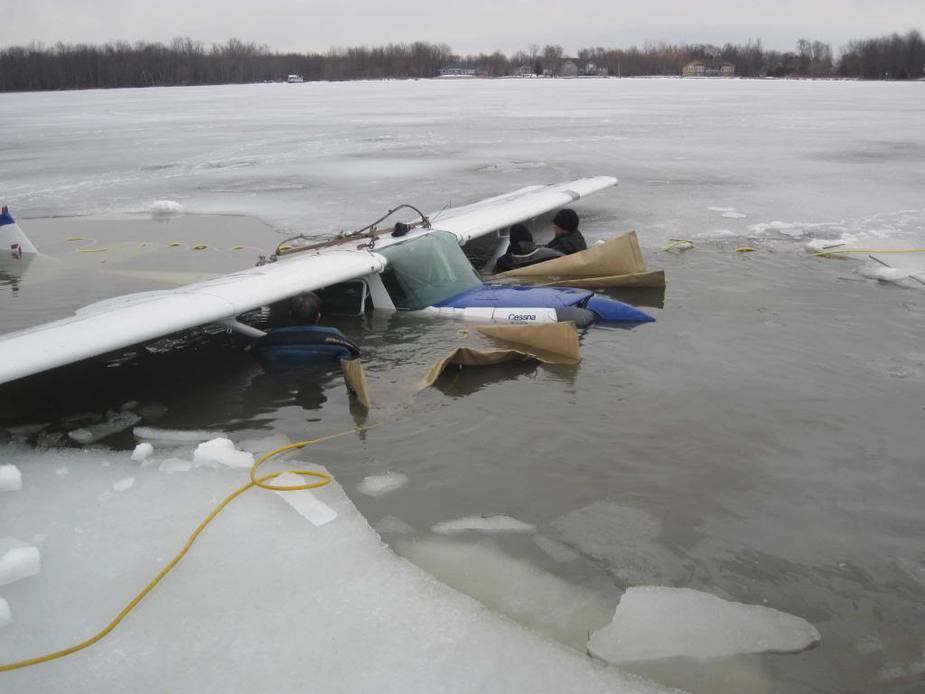
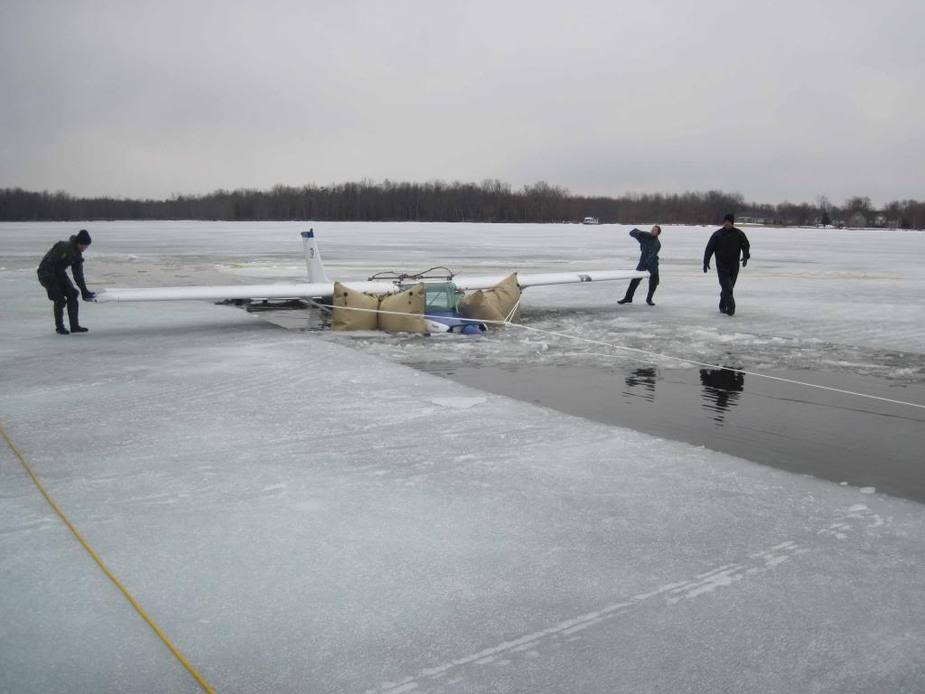
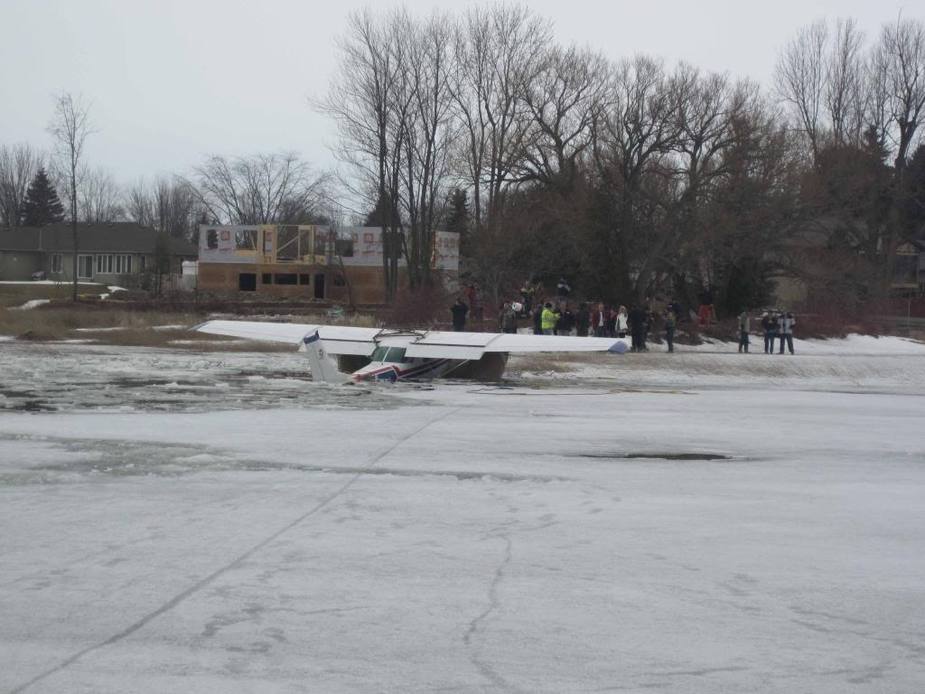
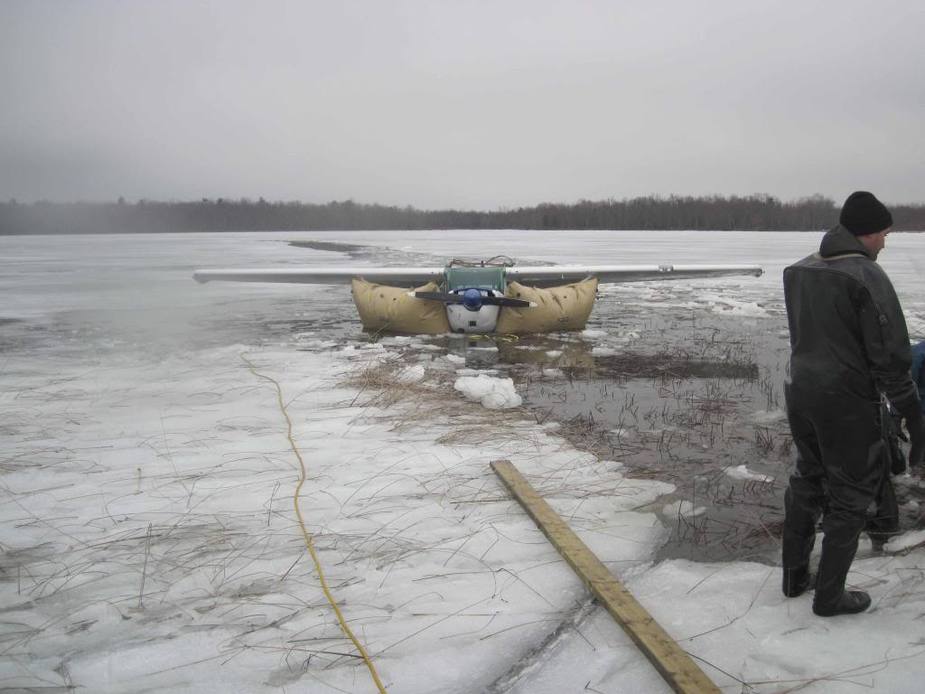
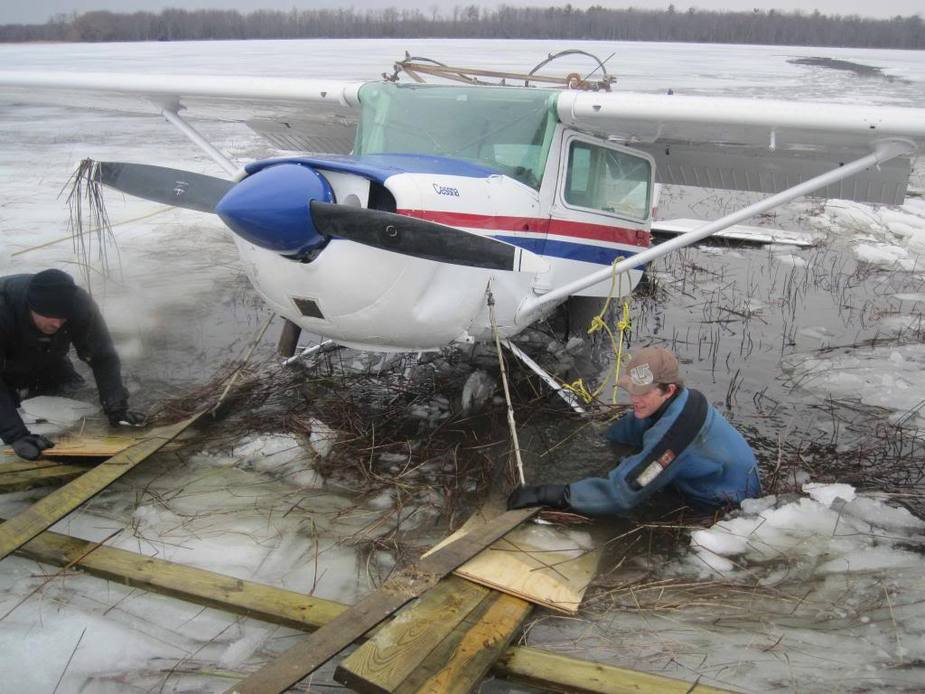
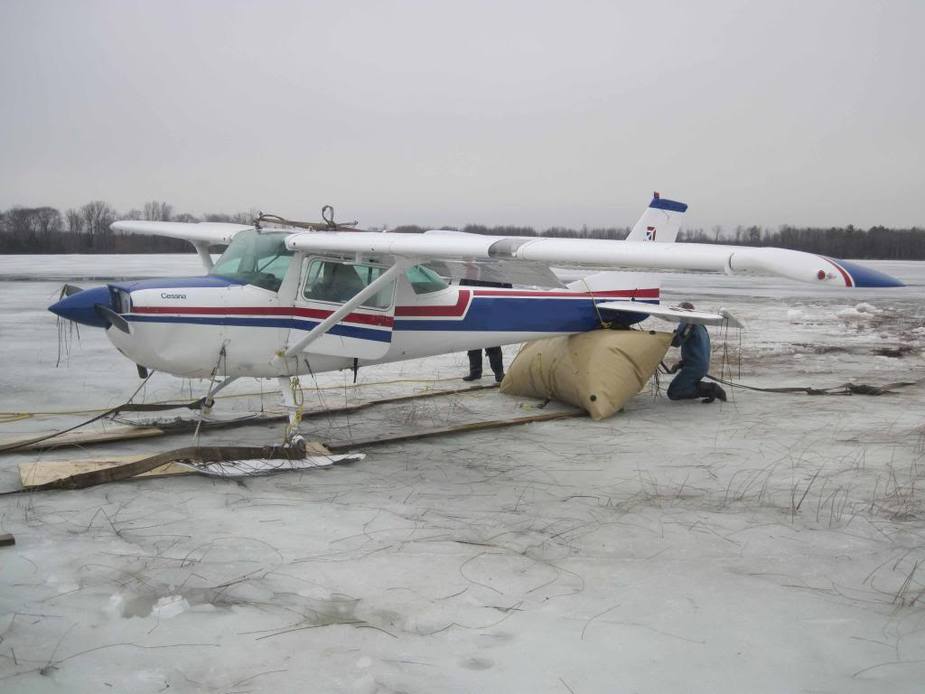
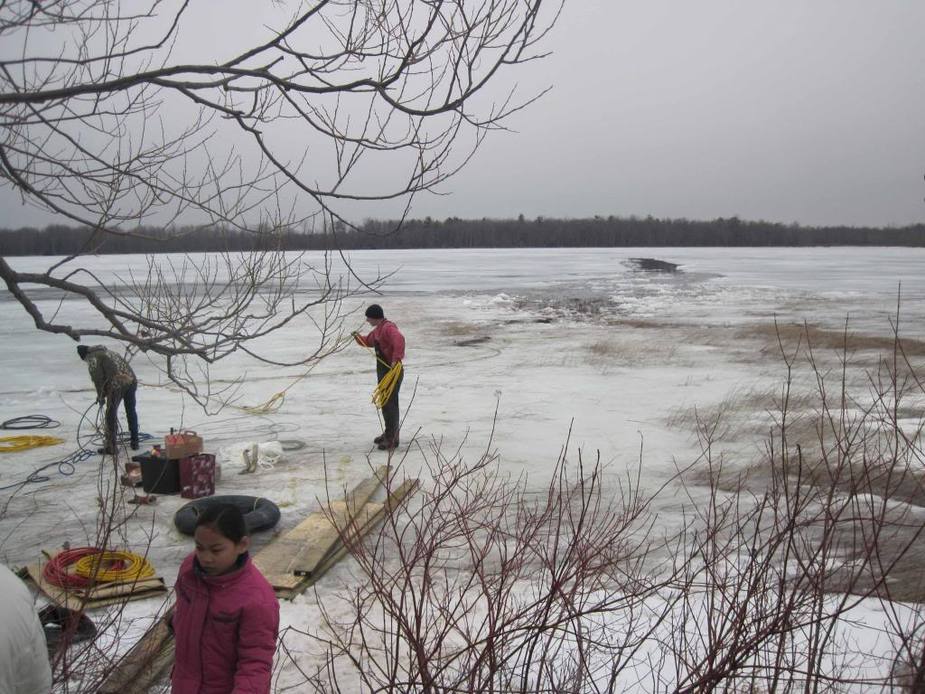
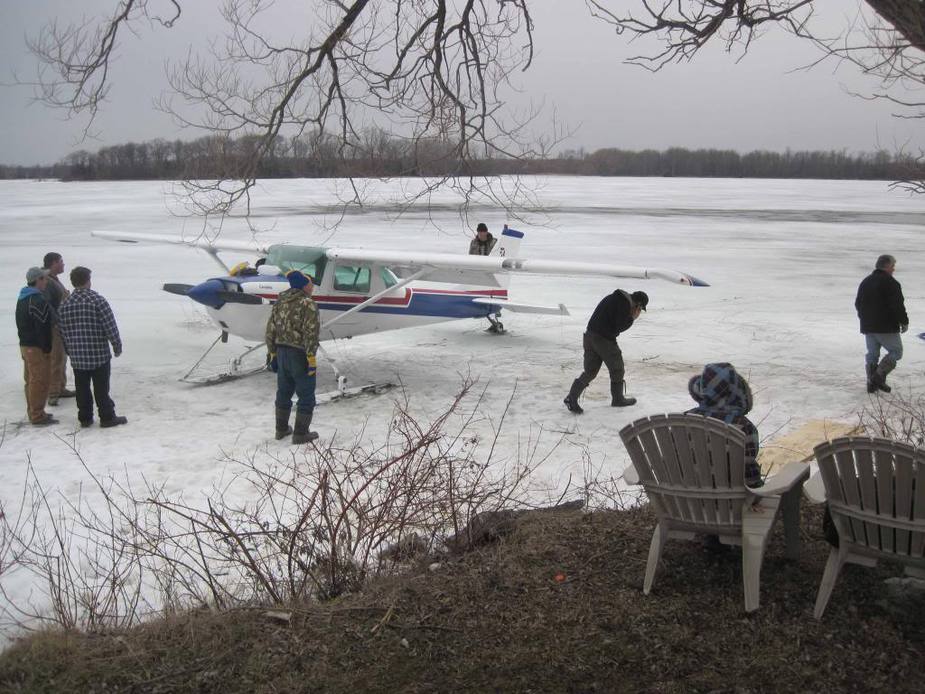
Landing on the ice is somewhat common, and more so as you go north in Canada. The biggest plane I have landed on the ice is the 182RG, which is probably the most poor choice of Cessna for this role. As is obvious, you REALLY have to know the ice before you commit to landing. This is a very experienced based activity!
Amazing photos there PDAR! Thanks for sharing.
Out of interest to people land on frozen water just for fun, or is there a real utility to it? (Not that there isn't a utility to having fun!)
I suppose what I'm wondering is are some of these places reliant on "ice runways" for access when regular runways are covered in snow, or are they waterdromes during the summer and ice runways in the winter?
It's a type of flying that I know nothing about.
Colm
Thanks for those photos - really interesting.
Out of interest, what's the prognosis for the plane? I can see the cowling has been dinted a bit, but there seems to be surprisingly little injury given how thin some of the wing skins are. I'm guessing that all the instruments will be untrustworthy and have to be replaced, but that the engine and airframe essentially just need to be dried out - I take it that this is freshwater immersion?
Can a plane really be dried out?
There are many metal to metal joints where water can get into the gap and stay there. One is supposed to do such joints with a sealant (Duralac and PRC1422 are two options) but this is rarely done on the lower-end GA types.